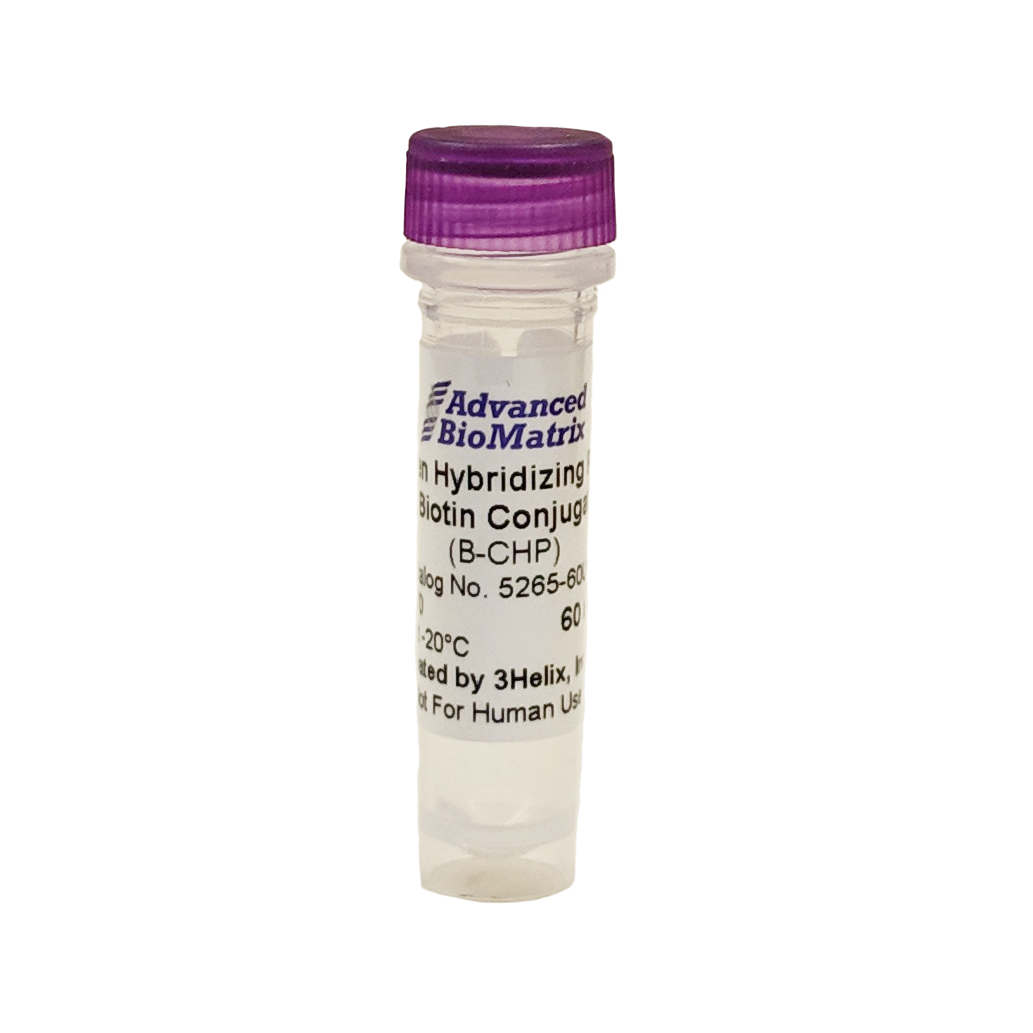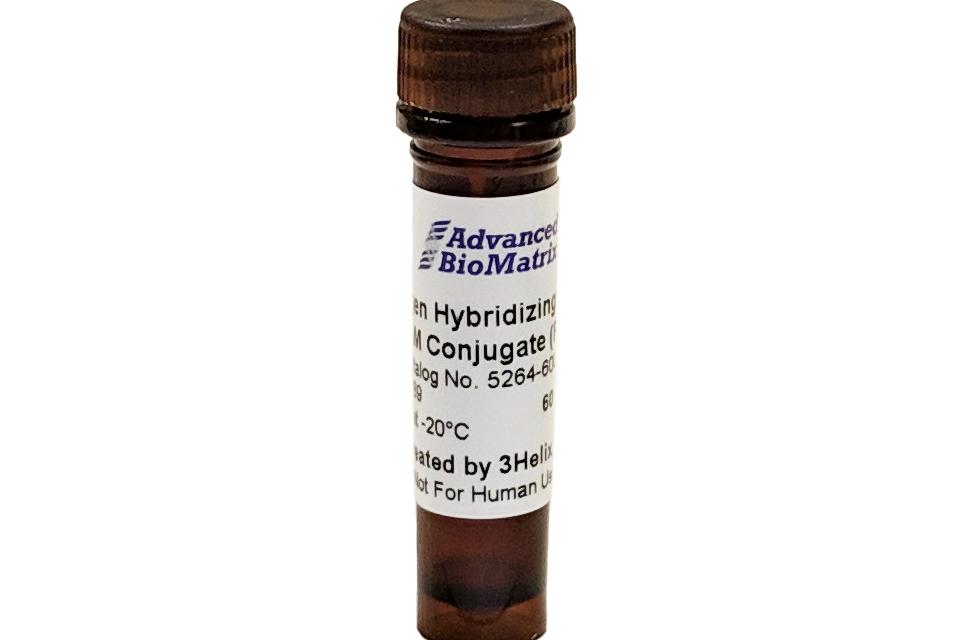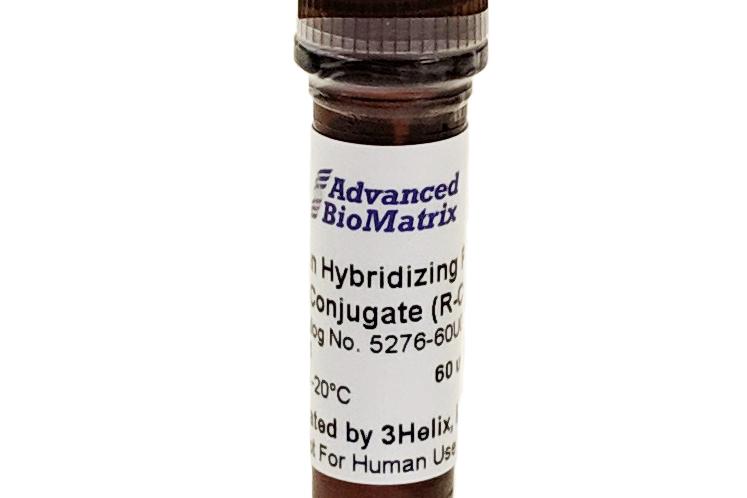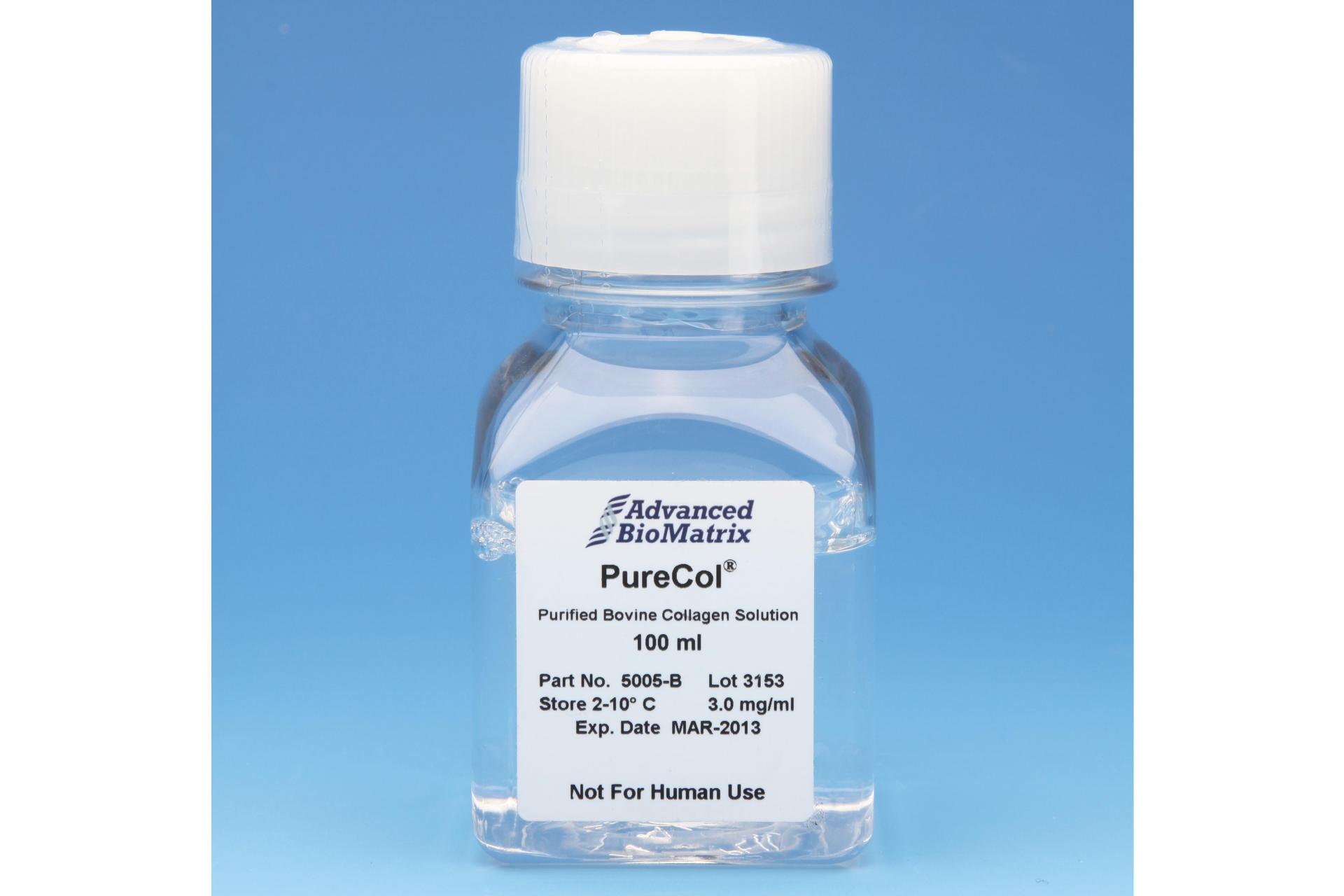-
Collagen
-
Type I - Atelocollagen
- PureCol® Solution, 3 mg/ml (bovine) #5005
- Nutragen® Solution, 6 mg/ml (bovine) #5010
- FibriCol® Solution, 10 mg/ml (bovine) #5133
- PureCol® EZ Gel, Solution, 5 mg/ml (bovine) #5074
- PureCol® Lyophilized, 15 mg (bovine) #5006
- VitroCol® Solution, 3 mg/ml (human) #5007
- VitroCol® Lyophilized, 15 mg (human) #5008
-
Type I - Telocollagen
- TeloCol®-3 Solution, 3 mg/ml (bovine) #5026
- TeloCol®-6 Solution, 6 mg/ml (bovine) #5225
- TeloCol®-10 Solution, 10 mg/ml (bovine) #5226
- RatCol® for 3D gels, Solution, 4 mg/ml (rat) #5153
- RatCol® High Concentration, Solution, 10 mg/ml (rat)
- RatCol® lyophilized, 100 mg (rat)
- RatCol® for Coatings, Solution, 4 mg/ml (rat) #5056
- Type I - Insoluble Collagen
- Type I - Bioinks
- Type II Collagen
- Type III Collagen
- Type IV Collagen
- Collagen Standard
- PureCol® Collagen Coated Plates
- Collagen Scaffolds
- Collagen Hybridizing Peptides
-
Type I - Atelocollagen
- Tunable Stiffness
- CytoSoft® Rigidity Plates
-
Bioprinting
- Support Slurry for FRESH Bioprinting
- Collagen Bioinks for Extrusion Bioprinting
- GelMA Bioinks for Extrusion Bioprinting
- Photoinitiators
- Bioinks and Components for DLP Bioprinting
- Bioink Components
- Methacrylated Collagen
- Methacrylated Gelatin
- Methacrylated Hyaluronic Acid
- Diacrylates
- Methacrylated Polysaccharides
-
3D Hydrogels
- Thermoreversible Hydrogel
- Silk Fibroin
-
Type I Collagen for 3D Hydrogels
- PureCol® Solution, 3 mg/ml (bovine) #5005
- Nutragen® Solution, 6 mg/ml (bovine) #5010
- FibriCol® Solution, 10 mg/ml (bovine) #5133
- PureCol® EZ Gel, Solution, 5 mg/ml (bovine) #5074
- VitroCol® Solution, 3 mg/ml (human) #5007
- TeloCol®-3 Solution, 3 mg/ml (bovine) #5026
- TeloCol®-6 Solution, 6 mg/ml (bovine) #5225
- TeloCol®-10 Solution, 10 mg/ml (bovine) #5226
- RatCol® for 3D gels, Solution, 4 mg/ml (rat) #5153
- HyStem® Thiolated Hyaluronic Acid
- Methacrylated Collagen
- Methacrylated Gelatin
- Methacrylated Hyaluronic Acid
- Diacrylates
- Collagen Sponges
- Methacrylated Polysaccharides
- Extracellular Matrices
- HyStem / Hyaluronic Acid
-
Adhesion Peptides / Proteins
-
Recombinant Adhesion Proteins
- CD2, 0.5 mg/ml #5086
- CDH3, 0.5 mg/ml #5124
- CDH13, 0.5 mg/ml #5125
- CD14, 0.5 mg/ml #5089
- CDH18, 0.5 mg/ml #5090
- CD40, 0.5 mg/ml #5093
- CD86, 0.5 mg/ml #5096
- CD164, 0.5 mg/ml #5100
- CD270, 0.5 mg/ml #5127
- CD274, 0.5 mg/ml #5126
- CD276, 0.5 mg/ml #5123
- E-Cadherin (CD324), 0.5 mg/ml #5085
- ICAM2, 0.5 mg/ml #5107
- Adhesion Peptides
- Collagen Hybridizing Peptides
-
Recombinant Adhesion Proteins
- Reagents
- Assays
Biotin Conjugate
Collagen Hybridizing Peptide (Biotin)
Catalog #5265
Biotin Conjugate
Collagen Hybridizing Peptide (Biotin)
Catalog #5265
The Biotin Collagen Hybridizing Peptide (CHP) is a synthetic peptide that can specifically bind to denatured collagen strands through hydrogen bonding, both in histology, in vivo, and in vitro (3D cell culture). CHP's serve as a unique tool for identifying denatured collagen.
Product Description
Collagen Hybridizing Peptides (CHP) conjugates from Advanced BioMatrix are labeled with 5-FAM (F-CHP, Catalog No. 5264-60UG) / sulfo-Cyanine3 (R-CHP, Catalog No. 5276-60UG) for fluorescence detection, or biotin (B-CHP, Catalog No. 5265-60UG) for avidin/streptavidin-mediated detection.
The triple helix is the hallmark protein structure of collagen. During tissue remodeling, the triple helical collagen molecules are degraded by specific proteases (e.g., MMP or cathepsin K) and become unfolded at body temperature. The Collagen Hybridizing Peptide (CHP) is a synthetic peptide that can specifically bind to such denatured collagen strands through hydrogen bonding, both in histology, in vivo, and in vitro (3D cell culture). By sharing the structural motif and the Gly-X-Y repeating sequence of natural collagen, CHP has a strong capability to hybridize with denatured collagen strands, in a fashion that is similar to a DNA fragment annealing to its complimentary DNA strand during PCR. CHP is an extremely specific probe for unfolded collagen molecules: it has negligible affinity to intact collagen molecules due to the lack of binding sites; it is also inert towards non-specific binding because of its neutral and hydrophilic nature.
| Parameter, Testing, and Method | CHP Biotin #5265 |
| Specialty | Flexible avidin / streptavidin mediated detection options based on needs, allowing non-green fluorescence and HRP methods to avoid background and enhance signal |
| Formula | C124H181N31O39S |
| Molecular Weight | 2762.01 g/mol |
| Ex/Em | N/A |
| Synonym | Collagen Mimetic Peptide, CMP |
| Solubility | Aqueous Buffers |
| Storage | -20°C as powder for long term storage. 4°C after reconstitution in water. Protect from light. |
| Source | Synthetic |
| Shelf Life | Minimum of 6 months from date of receipt |
Storage/Stability:
The product ships on ambient. Store the product at -20°C.
Features of CHP reagents
- More informative, reliable and convenient than zymography, DQ collagen, SHG, and TEM
- High affinity and unparalleled specificity to collagen with essentially no nonspecific binding
- Applicable to denatured collagens of all subtypes and from all species; binding relying on collagen’s secondary structure instead of specific epitopes
- Suitable for both frozen and paraffin-embedded sections with no need for antigen retrieval
- A non-antibody approach with no species restrictions, compatible for co-staining with any antibody
- Small size (2% of IgG by MW) enabling facile tissue penetration during whole tissue staining (with no need for sectioning)
- Stable in solution under 4 °C, eliminating the need to aliquot for storage
Product Q & A
The CHP is fairly stable. Therefore, it is possible to reuse a dilute solution that has been heated already, although the intensity of the stain may decrease and results may not be as optimal. To reuse the dilute solution, it needs to be heated to 80C and cooled down again immediately prior to reuse.
Product Certificate of Analysis
No result for .
Product Disclaimer
This product is for R&D use only and is not intended for human or other uses. Please consult the Material Safety Data Sheet for information regarding hazards and safe handling practices.





